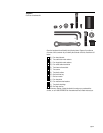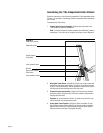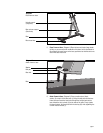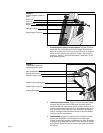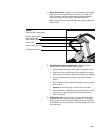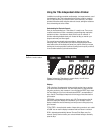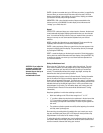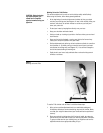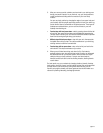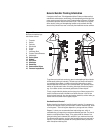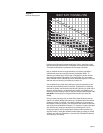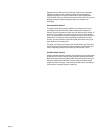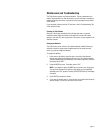page 13
3. After your warm-up period, maintain your heart rate in your training zone
during your aerobic session. As you work out, vary your body position to
reduce localized muscle fatigue and to exercise all your lower body
muscles.
You can vary body position by changing the angle of your upper body and
your footstep. Use the upright upper body position to work your entire leg;
use the forward lean to concentrate on the gluteal muscles. Three types of
footsteps are explained below; you can use one of these or your own
footstep when working out.
• Forefoot step with heel press down—start by pressing down with the ball
of your foot, then press the heel down and straighten the supporting leg.
This step helps to stretch your calf muscles and Achilles tendon to prevent
them from becoming too tight during your workout.
• Midfoot step with heel press down—step with your arch, then press the
foot pedal down with your heel. This step concentrates on your entire leg,
working muscles in both the front and back.
• Forefoot step with toe press down—step on the ball of your foot for the
entire stroke. This step concentrates on your calves.
4. When you are finished exercising, cool down for 3 to 5 minutes by
gradually reducing your step rate and step height. If earlier you decreased
the resistance level for your aerobic session, move the level to a higher
setting to help your body cool down. A proper cool-down helps to
transport excess lactic acid out of the working muscles, allowing them to
recover faster.
For best results, vary your workouts by changing duration, intensity, footstep,
body position, and type of work (such as interval training). We recommend that
you keep track of your workouts by writing them down; this way you can
monitor your progress toward your fitness goals and use the information as a
reference in planning interesting, challenging workouts.



